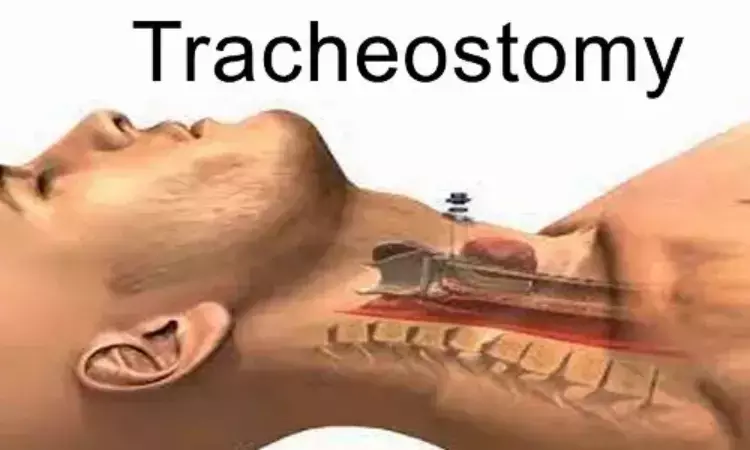- Home
- Medical news & Guidelines
- Anesthesiology
- Cardiology and CTVS
- Critical Care
- Dentistry
- Dermatology
- Diabetes and Endocrinology
- ENT
- Gastroenterology
- Medicine
- Nephrology
- Neurology
- Obstretics-Gynaecology
- Oncology
- Ophthalmology
- Orthopaedics
- Pediatrics-Neonatology
- Psychiatry
- Pulmonology
- Radiology
- Surgery
- Urology
- Laboratory Medicine
- Diet
- Nursing
- Paramedical
- Physiotherapy
- Health news
- Fact Check
- Bone Health Fact Check
- Brain Health Fact Check
- Cancer Related Fact Check
- Child Care Fact Check
- Dental and oral health fact check
- Diabetes and metabolic health fact check
- Diet and Nutrition Fact Check
- Eye and ENT Care Fact Check
- Fitness fact check
- Gut health fact check
- Heart health fact check
- Kidney health fact check
- Medical education fact check
- Men's health fact check
- Respiratory fact check
- Skin and hair care fact check
- Vaccine and Immunization fact check
- Women's health fact check
- AYUSH
- State News
- Andaman and Nicobar Islands
- Andhra Pradesh
- Arunachal Pradesh
- Assam
- Bihar
- Chandigarh
- Chattisgarh
- Dadra and Nagar Haveli
- Daman and Diu
- Delhi
- Goa
- Gujarat
- Haryana
- Himachal Pradesh
- Jammu & Kashmir
- Jharkhand
- Karnataka
- Kerala
- Ladakh
- Lakshadweep
- Madhya Pradesh
- Maharashtra
- Manipur
- Meghalaya
- Mizoram
- Nagaland
- Odisha
- Puducherry
- Punjab
- Rajasthan
- Sikkim
- Tamil Nadu
- Telangana
- Tripura
- Uttar Pradesh
- Uttrakhand
- West Bengal
- Medical Education
- Industry
Petroleum Jelly Outperforms Saline in Preventing Tracheostomy Pressure Injuries: Study

Researchers have found in a new study that application of petroleum jelly after tracheostomy proved more effective than sodium chloride irrigation in preventing pressure injuries and preserving skin integrity. The study was published in BMC Surgery by Chidchanok C. and colleagues. Tracheostomy-related pressure injuries (TRPIs) are frequent complications associated with prolonged recovery, risk of infection, and extended hospital stay. Thus, prevention is key in enhancing postoperative outcomes.
Vajira Hospital, Navamindradhiraj University, a tertiary referral center, was the setting for this prospective, randomized controlled trial comparing petroleum jelly application with normal saline irrigation for prevention and healing of tracheostomy-related pressure injuries. A total of 28 participants, aged 18 to 80 years, who underwent tracheostomy procedures were enrolled in the study. Participants were randomly assigned in a 1:1 ratio using a permuted-block randomization method (block size = 4) into two groups: one receiving petroleum jelly application and the other receiving sodium chloride (0.9% NaCl) irrigation.
The results of the study were measured by a doctor and a nurse at one week, two weeks, and four weeks after surgery by two reliable tools: the Pressure Ulcer Scale for Healing (PUSH) Tool and the Skin Integrity Score. Interrater reliability between the two assessors was indicated as good to excellent, with resultant consistent measurements of outcome.
Key Findings-
• The findings distinctly showed petroleum jelly application to be remarkably more effective than normal saline irrigation in healing and preventing pressure injuries related to tracheostomy.
• Patients with the petroleum jelly group had lower mean PUSH values at the first, second, and fourth weeks after surgery, reflecting quicker and better wound healing.
• The same group had higher median Skin Integrity Scores at all time points than did the saline group, reaffirming improved preservation of peristomal skin.
• The interrater agreement between physician and nurse ratings was good to excellent, adding strength to the credibility of the observed results.
• The petroleum jelly arm maintained improvement on all follow-up intervals on both scoring measures, whereas the saline group had more retarded or non-progressive healing.
• These results make petroleum jelly a more effective technique for tracheostomy wound integrity and peristomal pressure injury prevention in the postoperative environment.
The research concluded that the application of petroleum jelly after tracheostomy was more effective in preventing pressure injury and enhancing accelerated wound healing compared to irrigation with normal saline. The results advocate for the use of petroleum jelly as a universal part of postoperative tracheostomy care because it is easy, safe, inexpensive, and clinically effective.
Reference:
Chutimasaengtrakul, C., Urathamakul, S. & Bunnag, K. Petroleum jelly vs. Saline in tracheostomy wound care and pressure injury prevention: a randomized controlled trial. BMC Surg 25, 452 (2025).https://doi.org/10.1186/s12893-025-03224-w
Dr Riya Dave has completed dentistry from Gujarat University in 2022. She is a dentist and accomplished medical and scientific writer known for her commitment to bridging the gap between clinical expertise and accessible healthcare information. She has been actively involved in writing blogs related to health and wellness.
Dr Kamal Kant Kohli-MBBS, DTCD- a chest specialist with more than 30 years of practice and a flair for writing clinical articles, Dr Kamal Kant Kohli joined Medical Dialogues as a Chief Editor of Medical News. Besides writing articles, as an editor, he proofreads and verifies all the medical content published on Medical Dialogues including those coming from journals, studies,medical conferences,guidelines etc. Email: drkohli@medicaldialogues.in. Contact no. 011-43720751


